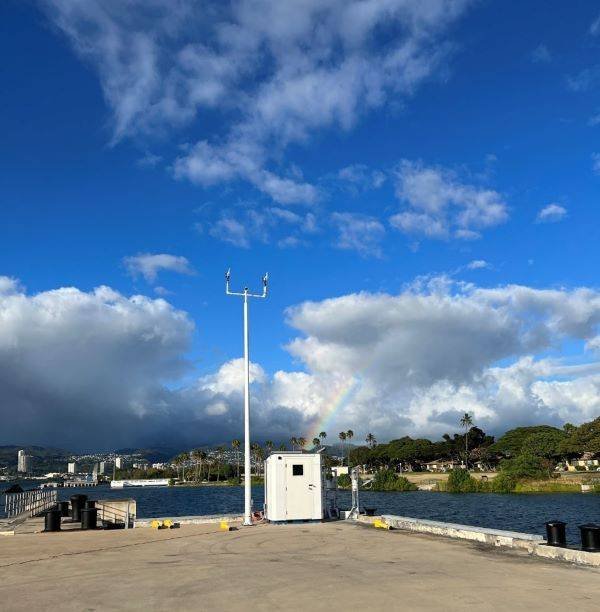NOAA’s PORTS® System Enhances Maritime Safety in Pearl Harbor-Honolulu
NOAA’s first Physical Oceanographic Real-time System, or PORTS®, at Pearl Harbor-Honolulu, Hawaii, is now operational. Installed by NOAA’s National Ocean Service, data from the new publicly available observation system advances NOAA’s ability to better serve Hawaii’s coastal communities and secure maritime safety in the Pacific Islands.
Enhancing Safety and Operations
Pearl Harbor-Honolulu PORTS is NOAA’s 40th system in this national network of precision marine navigation sensors concentrated in busy U.S. seaports, and is the result of a partnership between NOAA and U.S. Navy Region Hawaii. Data from the system will be used to assist in the Navy’s planning and monitoring during daily operations and hazardous weather situations in Pearl Harbor and on Joint Base Pearl Harbor-Hickam.
Commercial and local mariners traveling to Honolulu Harbor will have access to these real-time observations, enabling safer vessel movement, cargo capacity assessment, and reduced transit delays for commercial traffic. Honolulu Harbor handles more than 11 million tons of cargo annually.
Key Features of the PORTS® System
The Pearl Harbor-Honolulu PORTS consists of one water level and meteorological station located in Pearl Harbor (Ford Island) and a buoy-mounted current meter at Ford Island Channel, Lighted Buoy #1, sponsored by the U.S. Navy. The system collects data on wind, air temperature, air pressure, and tidal currents to assist mariners in safe docking in adverse weather conditions and heavy ship traffic.
Additionally, the system integrates data from a NOAA National Water Level Observation Network station at Honolulu Harbor and a Coastal Data Information Program wave buoy at the entrance to Pearl Harbor.
Benefits of PORTS® Program
PORTS® is a successful public-private partnership program that provides real-time environmental data to vessel operators in seaports, supporting safe vessel movements and reducing maritime accidents. The new Pearl Harbor-Honolulu PORTS® system, maintained by NOAA, will contribute to the safety and economic benefits of the program.
The integration of the PORTS® system in Pearl Harbor-Honolulu enhances maritime safety, supports military operations, and improves efficiency for commercial and local mariners navigating the busy seaport. The availability of real-time data will enable proactive measures in response to hazardous weather conditions and coastal flooding impacts, benefiting the community and the economy.

